ABERDEEN PROVING GROUND, Md. (July 21, 2010) -- During raids as an infantry company commander in Iraq, Maj. Bill Venable experienced frequent 45-minute drives to receive detailed mission orders from battalion headquarters.
Through the unprecedented combination of three separate waveforms, Soldiers at White Sands Missile Range, N.M., received similar information instantaneously with the click of a button.
"Within a minute, we were already talking about the mission," said Venable, assistant project manager, Infantry Brigade Combat Team of the Program Executive Office for Integration.
The Brigade Combat Team Integration Exercise, which concluded last week, brought together engineers from the Army acquisition community, Soldiers from the Army Evaluation Task Force and the Army's senior leaders, who each experienced firsthand the Army's future tactical network at White Sands and Aberdeen Proving Ground.
Lessons-learned during the exercise will yield future programmatic decisions in the Warfighter Information Network-Tactical, or WIN-T Increment Two program, said Pat DeGroodt, the program's deputy product manager.
"The exercise was very powerful," he said. "I think it has a lot of potential to change the warfighters' tactics and techniques."
The AETF maneuvered through White Sands along improvised explosive device routes, performed air-assault missions, conducted raids of homemade explosive-making facilities and used PEO Integration's Small Unmanned Ground Vehicle, or SUGV robot to identify and remove simulated IEDs from a cave. The mountainous terrain of White Sands closely mirrors that of Afghanistan where Soldiers perform similar missions today.
At White Sands, engineers repeatedly launched the Shadow unmanned aircraft system with a Rifleman Radio attached to each of its wingtips. Equipped with these, the Shadow, which presently can reach a ceiling of nearly 15,000 feet above sea level and endure six hours of air time, allowed two separate Rifleman Radios on the ground to communicate beyond line of sight. This enabled individual Soldiers in separate companies to pass messages without seeing one another.
In most cases, beyond-line-of-sight data sharing is not possible below the battalion level. Today, WIN-Increment One provides battalion-level and above warfighters with the ability to connect to the Army's digitized systems, voice, data, and video via satellite connections. WIN-T Increment Two will build upon Increment One's capabilities by extending satellite communications down to the company level while providing increased bandwidth while on-the-move.
Leaving a rail-based runway at 70 knots, the Shadow can maintain speeds between 65-110 knots. In addition to the Shadow, Apache and Black Hawk helicopters also maneuvered across the White Sands skies, serving as aerial communications nodes during the exercise.
"We took a hard look at how we could get physics to work for us by getting an aerial layer in place," said Lt. Col. James McNulty, an exercise trail boss.
Many radios used in this exercise, such as the Rifleman Radio, were surrogates for radios which will be used in the final, deployable waveform solution. In future months, the Army will examine each of the capabilities demonstrated and determine which will be included in the 2017 network.
The exercise was a "team sport" which involved PEOs Integration; Command, Control and Communications-Tactical; Aviation; Soldier; Joint Tactical Radio System, or JTRS; Intelligence, Electronic Warfare and Sensors; the Army Evaluation Test Command and its Operational Test Command; Training and Doctrine Command; AETF; the Central Technical Support Facility, Fort Hood, Texas; the Future Force Integration Directorate and personnel from the White Sands and APG installations, said Maj. Gen. John Bartley, the PEO for Integration.
The exercise was designed to help the Army continue to formulate its tactical network strategy by seeking to prove the concept of an integrated tactical network available to Soldiers at all echelons of the brigade combat team.
Testing waveforms/stressing the network:
At White Sands, Soldiers maneuvered various platforms at vast distances away from one another to see if they could maintain network connectivity. The network was stressed during numerous operational vignettes and experienced the diverse temperatures, environmental factors and altitudes of White Sands.
The Army's three network waveforms were established based on the amount of information passed across each, said Rick Cozby, PEO Integration's associate director for C4ISR testing. Smaller echelons share less information, which lessens bandwidth requirements, he explained. This allows Soldiers to operate successfully with smaller, more portable radios than those needed at higher echelons.
In today's tactical environment, the Soldier Radio Waveform, or SRW, operates at the lowest level echelon, providing information to individual Soldiers or teams within a company. As echelon levels increase, more tactical data is shared and the large communications pipe of Wideband Network Waveform, or WNW, is a necessary provision.
With the WNW, Soldiers use the Network Integration Kit, or NIK, which integrates radios with computer-based applications and can be mounted directly into a platform. Connectivity is achieved through an aerial layer using the Joint Tactical Radio System attached to unmanned aerial vehicles and other components such as airships and Rapid Aerostat Initial Deployment, or RAID towers.
The final Network Centric Waveform, or NCW, is the satellite layer, which allows warfighters to access the Internet and share voice, video and data across the globe. Today, these capabilities are achieved through WIN-T Increment One. A backbone air tier will be fielded in WIN-T Increment Three, which will bring a network backbone which can maintain connectivity at all times, regardless of whether a platform is moving or stationary.
The three separate waveforms were integrated to provide connectivity from the lowest to highest echelons, which was the point of the exercise. Cozby noted that acquisition programs of record exist to build the various waveforms and the associated radios, but there is no program of record designed to integrate them with each other. This was accomplished by the Army's new PEO for Integration, which was created as a result of an acquisition decision memorandum in December 2009 laying out the networks for 2011 and 2017.
In conjunction with that memorandum Gen. Peter W. Chiarelli, the vice chief of staff of the Army, required a demonstration of the Army network intended for 2017 during the year 2011.
The exercise demonstrated that this future network will be operationally relevant and functional, Bartley said.
"These emerging technologies will provide vital capability to our deployed forces and ensure that we keep our Soldiers equipped with best kit available," said Brig. Gen. N. Lee S. Price, the program executive officer for C3T.
Though the future WIN-T network will use either commercial KU-Band or military Wideband Global Satellite, know as WGS Communications satellites, only commercial satellites were used in the exercise, DeGroodt said.
Operational relevance from the company to the world:
As units in Afghanistan and Iraq maneuver in a dispersed fashion, the exercise demonstrated that the Army will be able to connect higher echelons to the rifleman and vice versa. Doing so, will empower the company commander, McNulty said.
"Providing the company commander with situational awareness and real-time actionable intelligence is critical to allowing the riflemen to conduct their mission," he said.
The future network was demonstrated during the past week, by connecting the SRW to WNW, which was then connected to the NCW. This capability will allow individual Soldiers to speak and share information with the battalion-level and above commanders and vice versa. In this case, information was passed from a brigade tactical command post at Aberdeen Proving Ground to White Sands.
This marked the first time these technologies inter-operated together, said Robert Wilson, director of tactical radios for PEO C3T. It also was the inception of many other exercises which will build upon the established network thread, so that this solution can be incorporated in the future.
McNulty cited an example of how a battle captain at APG was able to use WIN-T Increment Two to send a nearly six megabyte operations order to a company commander at White Sands. This company commander was able to share information with adjacent companies and their platoon leaders via WNW and SRW. He explained how this will increase the speed of operations and prevent casualties, as a Soldier today might have to drive 50 miles to deliver this information.
At White Sands, the Soldiers within a company could communicate to their own platoon and even at the battalion level, Venable said. Inside their command posts, company commanders exchanged text messages and e-mails, tracked simulated IEDs and collaborated on the battle with Command Post of the Future and planned fires with the Advanced Field Artillery Tactical Data System, or AFATDS. They tracked automatically populated friendly forces' movements and manually added enemy and hazard locations with Force XXI Battle Command Brigade-and-Below/Blue Force Tracking. They also used WIN-T Increment Two; the NIK; other Army Battle Command Suite 6.4 applications; JTRS Handheld, Manpack Small Form Fit radios and shared intelligence through the Distributed Common Ground System-Army.
Today, the majority of this information is only accessible at the brigade and battalion levels, said Lt. Col. John Matthews, also a trail boss for the exercise. Pushing this data to lower echelons allows the company commander to share the information with his platoon and team leaders and coordinate the battle during direct enemy contact. Information was also exchanged digitally by aviation platforms, a critical tactical advantage for rapid and accurate close air support.
At White Sands, one Soldier used the Land Warrior system to request a medical evacuation to the company command post. Using the Shadow-connected system, which allows Soldiers to see battlefield information through an eyepiece attached to a helmet, Soldiers initiated calls for a medic and pushed information almost instantaneously to medical evacuation crews.
"That nine-line request for a medevac...was sent back to the battalion and then to the brigade in Aberdeen Proving Ground," McNulty said.
Developing the future network:
Throughout the exercise, engineers from across the separate PEOs and TRADOC met in working groups to determine how to integrate the terrestrial waveforms with the satellite communications capabilities of WIN-T Increment Two, said Clifton Basnight, a system-of-systems engineer with PM WIN-T. In just a few days, they carefully developed a "straw man's architecture" laying out how each would inter-operate, he said. The group held technical interchange meetings once per week, where they discussed and developed solutions for routing challenges. Solutions were carefully discussed and decisions were made as a team, he said.
"Before we went down a path we had some level of consensus," Basnight said.
Engineers like Basnight forged new relationships with those from sister PEOs. Many traveled to separate geographical regions, providing their expertise at each stop. "We put into play things that -- even though they might not have been the total solution -- they were vetted and had engineering rigor to them," Basnight said. "It wasn't done in a vacuum."
The Army leadership will use data from the exercise, which culminated over the past three months, to lay out what the mature network will look like in 2017, Bartley said.
"It was really a fantastic exercise of teamwork," DeGroodt said. "Everybody was out to make the exercise successful."
This integrative effort demonstrated the importance of diminishing stand-alone developmental efforts, Basnight said.
"We left with a sense of: we made the impossible possible," he said. "But this is just the beginning."
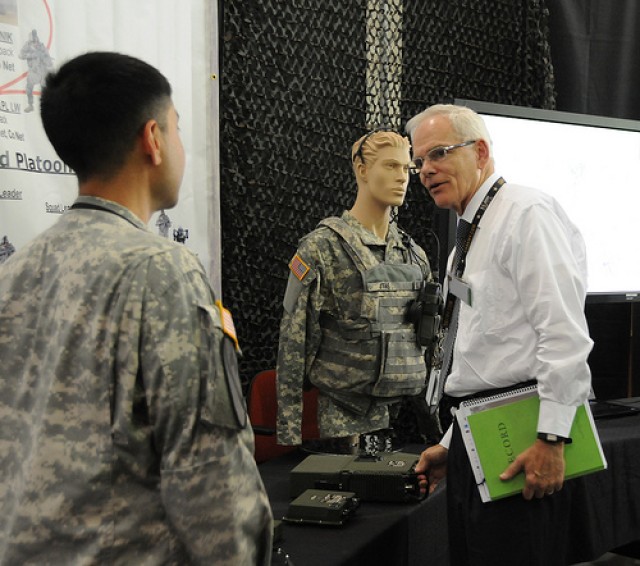
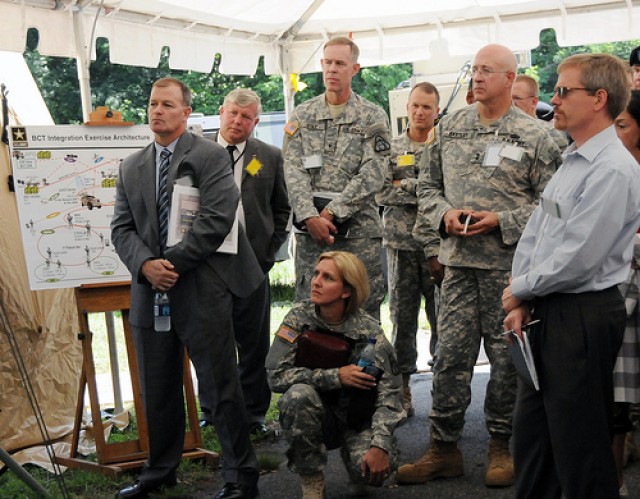
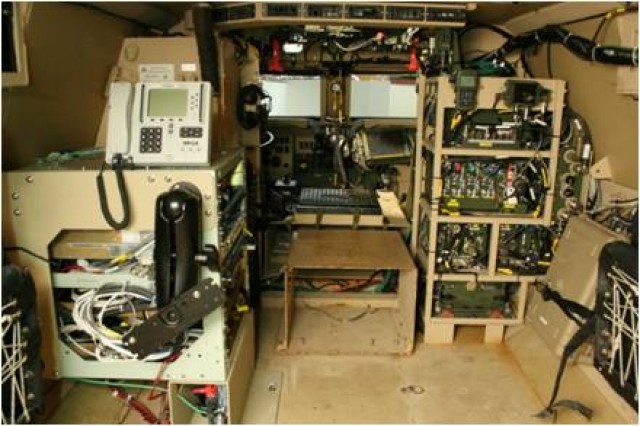
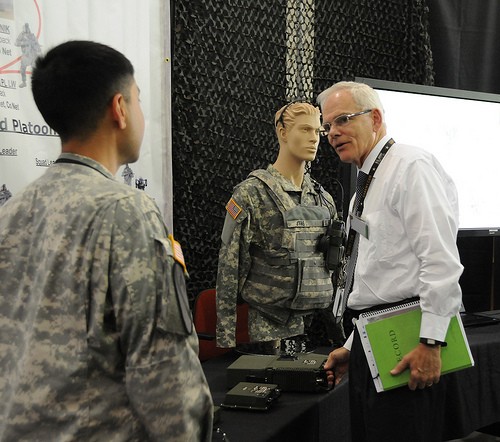
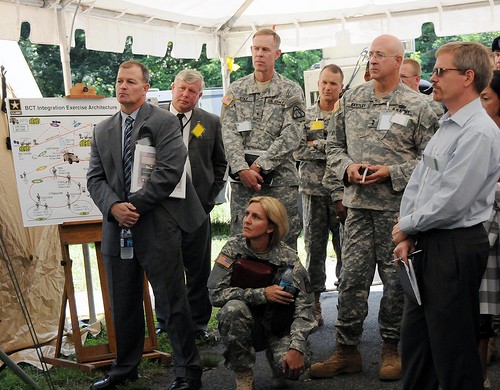
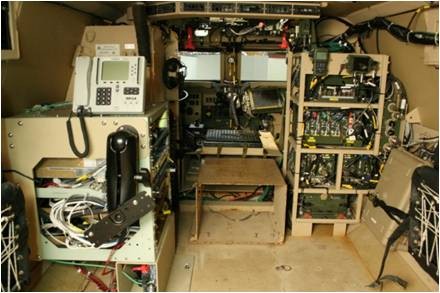
Social Sharing